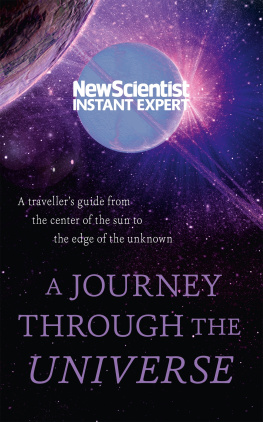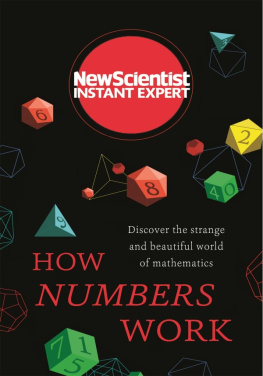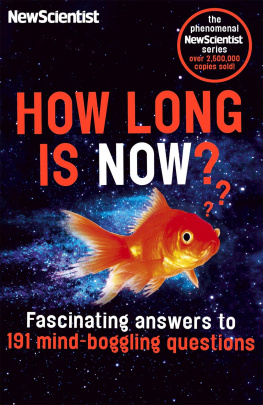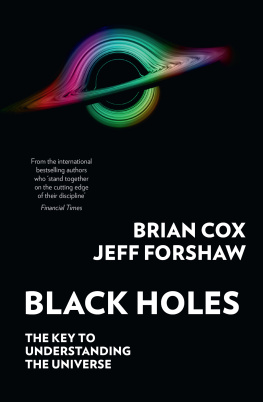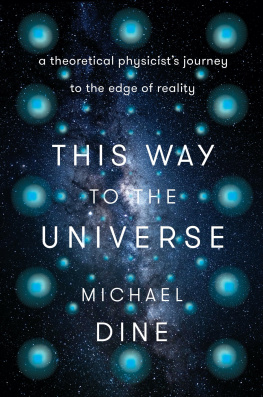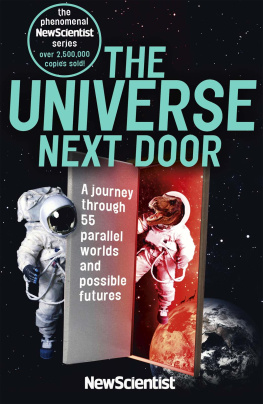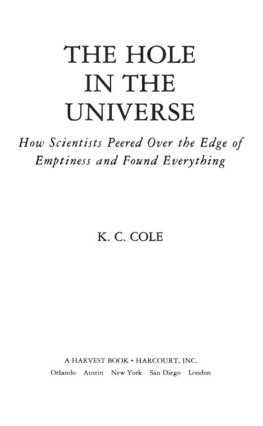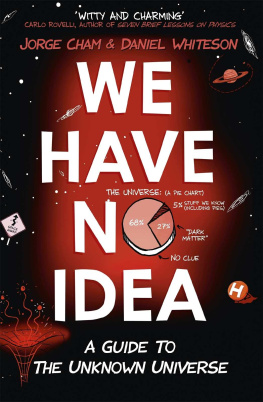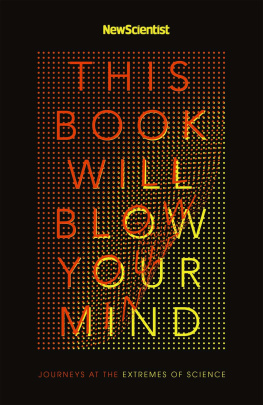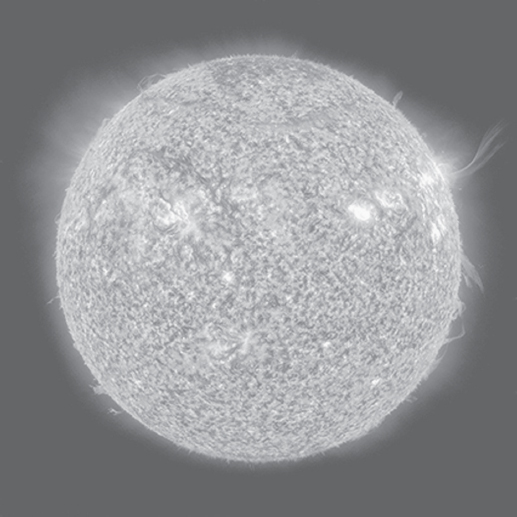A Journey Through The Universe
A travelers guide from the center of the sun to the edge of the unknown
NEW SCIENTIST
Contents
Series introduction
New Scientists Instant Expert books shine light on the subjects that we all wish we knew more about: topics that challenge, engage enquiring minds and open up a deeper understanding of the world around us. Instant Expert books are definitive and accessible entry points for curious readers who want to know how things work and why. Look out for the other titles in the series:
The End of Money
How Your Brain Works
The Quantum World
Where the Universe Came From
How Evolution Explains Everything about Life
Why the Universe Exists
Your Conscious Mind
Machines that Think
Scheduled for publication in 2018:
How Numbers Work
Human Origins
This is Planet Earth
Contributors
Editor: Stephen Battersby is a physics writer and consultant for New Scientist
Series Editor: Alison George
Instant Expert Editor: Jeremy Webb
Writers: Jacob Aron, Anil Ananthaswamy, Stephen Battersby, Emily Benson, Rebecca Boyle, Marcus Chown, Stuart Clark, Andy Coghlan, Rachel Courtland, Leah Crane, Ken Croswell, Sarah Cruddas, Pedro Ferreira, Will Gater, Conor Gearin, Lisa Grossmann, Adam Hadhazy, Alice Hazelton, Nigel Henbest, Hal Hodson, Rowan Hooper, Adam Mann, Dana Mackenzie, Maggie McKee, Mika McKinnon, Hazel Muir, Sean ONeill, Shannon Palus, Aviva Rutkin, Govert Schilling, Sarah Scoles, David Shiga, Michael Slezak, Joshua Sokol, Colin Stuart, Richard Webb, Chelsea Whyte, Sam Wong, Aylin Woodward.
Introduction
This is a journey into space. On board a spacecraft of advanced design we will visit the highlights of the known universe swooping among the hundreds of quirky worlds in our own solar system, then out into the Milky Way to meet seething unstable stars and exotic exoplanets, through the mysteries of the intergalactic void, to far-flung galaxies where giant black holes shine, and beyond to the exploding stars and collisions that create some of the most distant beacons we can see. For convenience, our embarkation point will be nearby, a mere 499 light seconds away, at an astronomical object that has been observed ever since eyes evolved.
Stephen Battersby, Editor
Star one
An unremarkable star in cosmic terms, the sun dominates our solar system, our sky and our lives. Within its core, protons fuse together to form helium nuclei, generating the heat that warms Earth along with a horde of ghostly neutrinos. As well as giving us light and life, the sun has the power to bring chaos to civilization unless we can better understand its magnetic mysteries.
The strangest star
Billions of stars fill our galaxy. Many burn bright, destined to become supernovae, while others are dim burnouts. They come alone and in pairs; with or without planetary companions. We have searched the far reaches of the universe in the hope of understanding the starsbut ultimately everything we know is based on our local reference point, the sun.
It is made of plasma ionized gas. It fuses hydrogen in its core. It blasts us with radiation and life-giving light. As stars go, it is roughly middle-aged, having been around for 4.6 billion years. And it probably has 5 or so billion more to go before it swells into a red giant that consumes Mercury, Venus and Earth. Yet our home star remains mysterious, abounding with strange phenomena
FIGURE 1.1 We tend to take our home star for granted but it is a truly remarkable object, with its own rain, tornadoes and plasma jets.
A magnetic calendar
Our planet takes 24 hours to spin once on its axis and 365 days to travel around the sun. The suns own schedule is nothing like so simple. Different parts of the sun spin at different rates. So while a day at the equator lasts 25 days, regions close to the poles take a few days longer to make a complete rotation. This uneven spin leads to distortion in the suns magnetic field. As the equator spins, it drags the magnetic field that connects to the suns pole. The suns field gets wound up, which builds tension, like twisting a rubber band. Eventually the magnetic field snaps and releases energy in the form of solar flares or huge projectiles of plasma called coronal mass ejections (CMEs).
This activity follows a cycle that lasts roughly 11 Earth years, with the overall magnetic field reversing its direction in each cycle, giving the sun its own calendar. During a solar minimum, flares are few, and so are sunspots (dark patches that appear on the suns surface, marking intense magnetic fields). During a solar maximum, more sunspots burst out, and there are more flares and CMEs. Sometimes CMEs can hit Earth and affect us, causing blackouts on Earth and damaging satellites.
The last solar maximum, around 2012 to 2015, was unusually calm, one of the weakest since records began in 1755. Predictions just a couple of years before had suggested that it would be a scorcher, which shows how little we understand solar cycles.
Blowing bubbles
As the sun follows its 11-year cycle, it alters its output of solar wind, X-rays, ultraviolet and visible light.
The sun provides nearly all the energy that drives Earths climate 2500 times as much as all other sources combined. Solar activity has been partly responsible for warm and cool periods in the past, and today low solar activity contributes to cold winters in northern Europe and the US, and mild winters over southern Europe although this is a small effect compared with global warming.
We now understand whats going on a little better thanks to a space-borne instrument called TIM, launched by NASA in 2003. TIM keeps tabs on the spectrum of radiation the sun emits, and detects subtle changes in energy output so scientists can distinguish between human causes of climate change and purely natural causes we cant control.
Changes in the suns output affect much more than just our climate, however. During a solar minimum, the stream of charged particles called the solar wind flows from the poles at a much higher speed, so theres more pressure pushing against material from interstellar space. This increases the size of the heliosphere, a huge magnetic bubble of charged particles that the sun blows around itself, stretching way out beyond Pluto. During a solar maximum, the suns magnetic fields are more knotted up and not as much wind escapes, so the heliosphere contracts.
Rain on the sun
We know the sun affects weather on Earth and in space, but it has its own dramatic weather. Superhot plasma that surrounds the sun forms the solar corona. Some of this plasma streams away to form the solar wind, but it can also rain back to the surface.
Though this coronal rain was predicted about 40 years ago, we couldnt see or study it until our telescopes became powerful enough. It works a bit like the water cycle on Earth where vapour warms, rises, forms clouds, cools enough to condense into a liquid and falls back to the ground as precipitation. The difference is that the plasma doesnt change from gas to liquid, it simply cools enough to fall back down to the solar surface.
This all happens very quickly and on a gargantuan scale, with droplets the size of countries plunging from heights of 63,000 kilometres about one-sixth of the distance from Earth to the moon.

